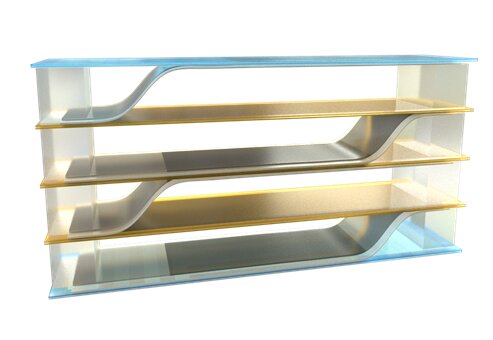November 25, 2020
feature
Recent technological advances have enabled the development of increasingly compact and flexible devices. This includes wearable or portable technology, such as smart watches, earphones or other smart accessories, which can assist human users in a variety of ways.
Researchers at University of California, Los Angeles (UCLA) have recently devised a strategy that could enable the fabrication of portable, compact and flexible electrocaloric cooling devices. This strategy, outlined in a paper published in Nature Energy, is based on a four-layer cascade mechanism that enables a significant temperature lift in a user’s surroundings.
“Our research started more than five years ago, when we were funded by ARPA-E, an agency of the U.S. department of energy, to solve a key cooling need: to maintain sufficient personal thermal comfort while reducing the HVAC energy consumption for offices and buildings,” Qibing Pei, one of the researchers who carried out the study, told TechXplore. “Our key goal was to create a wearable cooler.”
The pocket cooling device designed by Yuan Meng, the first author, Pei and their colleagues is made of an electrocaloric polymer film. When voltage is applied to the polymer, the device heats up due to a significant entropy reduction. Conversely, when the voltage is removed, the device’s temperature drops.
“We initially used an electrostatic actuation mechanism to move the polymer film to the heat sink while the voltage was applied so that the heat was dumped into the sink,” Pei explained. “The film was then actuated to the heat source and the voltage was removed. The film was cooled, absorbing heat from the heat source.”
Iniatially, the device created by Pei and his colleagues was mainly based on a mechanism that repeatedly shuttled the polymer film from its heat source component and its sink. This had a so-called net cooling effect on the source, resulting in a change of temperature. Unfortunately, however, the range of temperatures that could be achieved by the device using this mechanism alone was limited and remained around 5 degrees F.
“To increase this temperature span, we then introduced a cascade mechanism, putting up to four of the cooling units together in such a way that the cooling temperature span was multiplied to 16 degrees F,” Pei said. “Despite the additional layers, the cascade device remained thin, just 1 centimeter thick.”
In initial tests, the cooling device achieved remarkable energy efficiency and a maximum temperature lift of 8.7 K under no-load conditions. Moreover, it has an estimated performance coefficient of 9.0 at a temperature lift of 2.7 K and 10.4 at a temperature lift of zero.
“The cascade mechanism we devised is highly promising and produces a wide range of temperatures,” Pei said. “It also helps improve the devices efficiency by about three-fold. With these two improvements, we can foresee solid-state cooling devices that are compact, quiet, efficient and may even be made flexible.”
In the future, the cascade-based design proposed by Pei and his colleagues could be used to create portable cooling devices that vary in shape, size and performance. In their next studies, the researchers plan to explore the use of alternative or additional design strategies to make the device they created smaller, as well as more discreet, efficient and flexible.
A new efficient and portable electrocaloric cooling device
More information:
Yuan Meng et al. A cascade electrocaloric cooling device for large temperature lift, Nature Energy (2020). DOI: 10.1038/s41560-020-00715-3
2020 Science X Network
Citation:
A pocket cooling device based on a cascade mechanism (2020, November 25)
retrieved 25 November 2020
from https://techxplore.com/news/2020-11-pocket-cooling-device-based-cascade.html
This document is subject to copyright. Apart from any fair dealing for the purpose of private study or research, no
part may be reproduced without the written permission. The content is provided for information purposes only.



